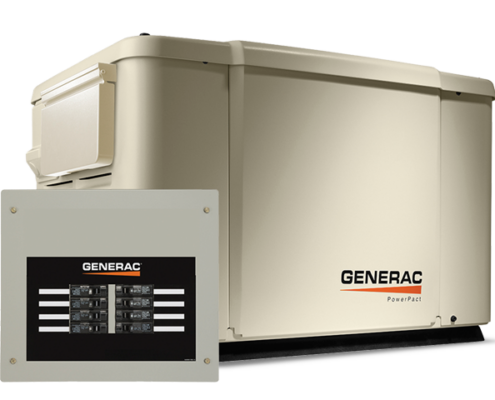Last Updated on July 29, 2022 by Mary Pressler

Understanding Crypto Technology
You have most likely read or heard about cryptocurrency by now, regardless of what you do for a living. Emerging technologies come with opportunities and risks, and blockchain is no exception. Cryptocurrency has been regarded by some as a speculative asset, but its real value comes from the underlying technology. According to Insider Intelligence, the potential applications of blockchain include:
- International payments
- Regulatory compliance
- Insurance via smart contracts
- Peer-to-peer transactions
- Supply chain management
- Keeping medical records in healthcare
- Real estate transactions
- Intellectual property in the media industry
- Energy transactions
In spite of their promising applications, cryptocurrencies have been criticized for their energy consumption. However, it’s important to understand that cryptocurrencies use different algorithms, and this determines their computing power requirements. In other words, their energy footprint per transaction completed can vary widely. The main challenge lies in developing an algorithm that is complex enough to provide safety, while keeping computing power requirements as low as possible.
Comparing the Energy Needs of Several Cryptocurrencies
TRG Datacenters is a Houston-based company, and they focus on sustainable data center services. In 2021 they conducted a study comparing the energy performance of various cryptocurrencies, analyzing their typical kilowatt-hour consumption per transaction:
| Cryptocurrency | kWh per Transaction |
| IOTA | 0.00011 kWh/transaction |
| XRP | 0.0079 kWh/transaction |
| Chia | 0.023 kWh/transaction |
| Dogecoin | 0.12 kWh/transaction |
| Cardano | 0.5479 kWh/transaction |
| Litecoin | 18.522 kWh/transaction |
| Bitcoin Cash | 18.957 kWh/transaction |
| Ethereum | 62.56 kWh/transaction |
| Bitcoin | 707 kWh/transaction |
As you can see in the table above, the energy needs of cryptocurrencies can differ by orders of magnitude. Also keep in mind that TRG Datacenters calculated average values; two transactions of the same cryptocurrency can use very different amounts of energy.
For example, Bitcoin uses the “proof of work” consensus mechanism, which is very demanding in terms of computer power. Alternative mechanisms like “proof of storage” or “proof of stake” can greatly improve the efficiency of crypto transactions.
- The Proof of Work mechanism is inefficient by design, since validators consume energy simply as “proof” of their investment in blockchain.
- The Proof of Stake mechanism skips the energy consumption step, since capital is staked directly in the form of cryptocurrency.
- The Proof of Storage mechanism also improves efficiency, being based on data storage instead of the use of computing power.
Which Are the Most Efficient Cryptocurrencies?
Trality is a provider of automated trading services via algorithms, and early in 2022 they published a list of the top 5 most efficient cryptocurrencies:
- Hedera Hashgraph (HBAR)
- SolarCoin (SLR)
- BitGreen (BITG)
- Chia (XCH)
- Algorand (ALGO)
Hedera Hashgraph (HBAR) only consumes 0.001 kWh per transaction, using a proof of stake mechanism called hashgraph consensus. Other than being energy efficient, HBAR also has a very low bandwidth. HBAR is managed by the Hedera Governing Council, and its 39 members include Google, Boeing and LG.
SolarCoin (SLR) is a cryptocurrency designed for users who generate large amounts of solar power – you can earn 1 SLR for every 1,000 kWh of verified solar generation. Compared with Bitcoin, SLR is 50 times more carbon efficient.
BitGreen (BITG) is another cryptocurrency that uses the proof of stake mechanism to achieve energy efficiency, and it was developed in 2017 as an alternative to Bitcoin. Just like you can earn SolarCoin for generating solar energy, you can earn BitGreen for using certain products and services that reduce your carbon footprint.
Chia (XCH) only uses 0.023 kWh per transaction thanks to the “proof of space and time” mechanism, which uses empty hard drive space connected to the network. Chia was developed in 2017 by Bram Cohen, who also developed BitTorrent. Unlike the proof of work mechanism used by Bitcoin, which demands computing power, the “proof of space and time” mechanism is based on storing certain volumes of data during specified periods of time.
Algorand (ALGO) was developed by Silvio Micali, an MIT professor and Turing Award Winner. ALGO was the first cryptocurrency using proof-of-stake blockchain to be develo, and it can operate on simple devices like a Raspberry Pi. The resulting emissions are orders of magnitude smaller than those of many other currencies – around 2 million times smaller according to initial estimates. Algorand announced that their blockchain had become carbon neutral in April 2021, and they are now working to become carbon-negative.










Leave a Reply
Want to join the discussion?Feel free to contribute!